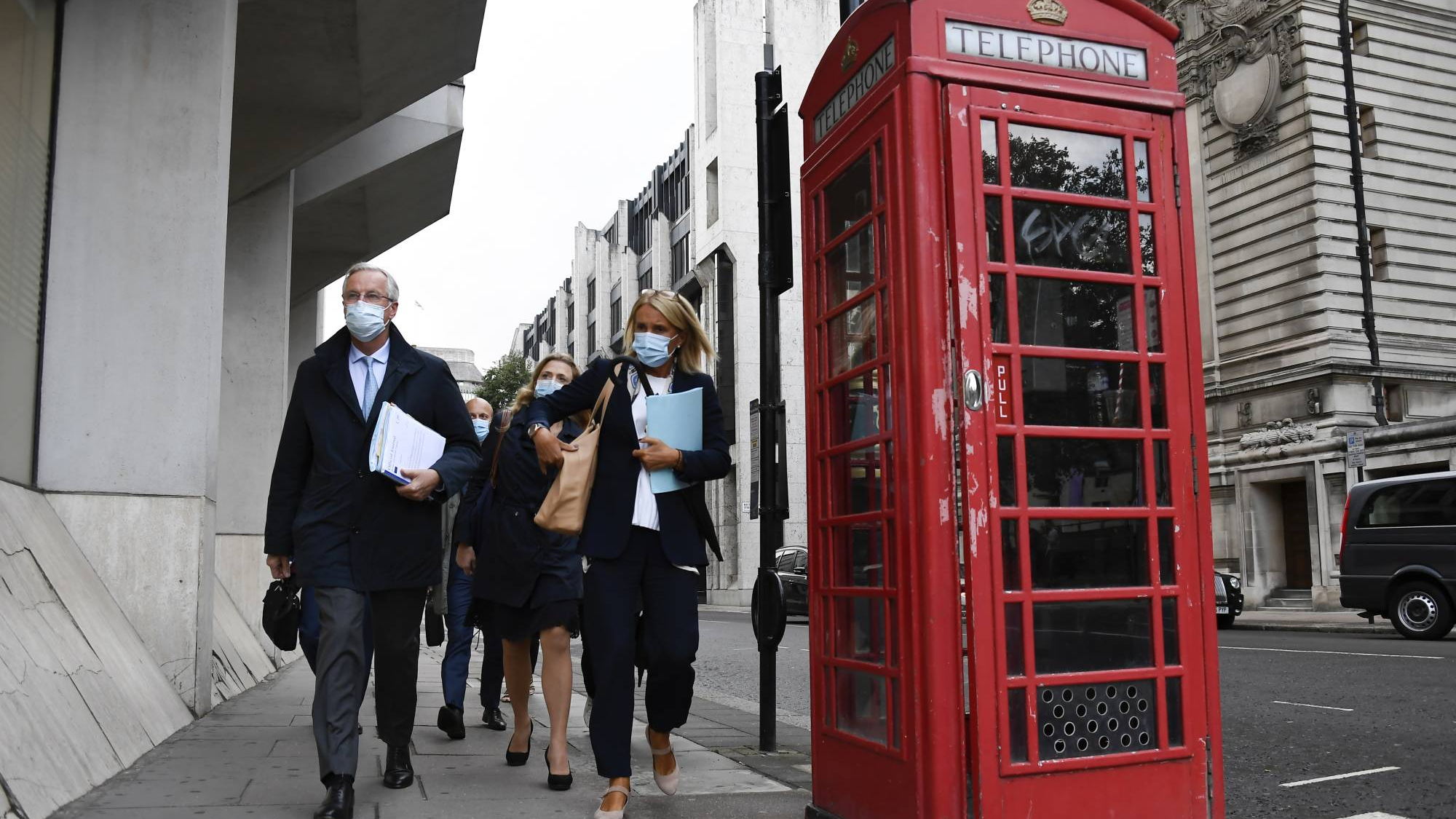
Chief EU negotiator Michel Barnier (left) makes his way to the Department for Business, Energy and Industrial Strategy, in London, United Kingdom, September 23, 2020. /AP
Chief EU negotiator Michel Barnier (left) makes his way to the Department for Business, Energy and Industrial Strategy, in London, United Kingdom, September 23, 2020. /AP
Editor's note: Jonathan Arnott is a former member of the European Parliament. The article reflects the author's opinions, and not necessarily the views of CGTN.
Understanding international relations reminds me of the classic Alice in Wonderland by Lewis Carroll: just like the Queen who remarked that she can "believe six impossible things before breakfast", two or more contradictory things are often going on at the same time. Both sides are gearing up for a legal battle, yet both seem closer than before to finding a compromise after this week's round of negotiations.
I've always been hopeful that the United Kingdom and the European Union will reach a mutually beneficial deal to ensure strong future trading relations. It's in the interests of both sides to do so, and the European Union has something of a tradition of agreeing deals at the 11th hour – when all seems to be on the point of breaking down.
The Withdrawal Agreement was a clever mechanism for kicking the key decisions down the road. Both sides have different interpretations of the three most important words – "level playing field."
On Day One, there is no practical problem – both sides will have the same rules. Over time, if the UK and EU legislate differently, they could drift further apart. In many free trade agreements, it's common for both sides to agree that they won't lower future standards. The European Union, noticing the size of the UK economy on its doorstep, wants the United Kingdom to commit to alignment to future EU legislation. The UK fears this would interfere with its sovereignty.
This hurdle is significant, because both sides have approached negotiations from wildly different perspectives. Tensions have increased over recent weeks. The United Kingdom accused the European Union of threatening to refuse to list it as an approved third country for food imports. Given the protocol on Northern Ireland, such refusal would limit moving food within the United Kingdom's territory, from Great Britain to Northern Ireland.
They responded by introducing legislation which would provide the British government the power to tear up the Withdrawal Agreement, leading the European Union to launch legal proceedings. Any decision on that legal action would likely not be reached for a year or two, by which time doubtless the future trajectory of relations will be known.
This background has set the scene for the latest round of trade negotiations. The German Chancellor Angela Merkel has described herself as optimistic that a compromise will be found, and EU Commission President Ursula von der Leyen is calling for talks to intensify. This is not the language of politicians expecting to return empty-handed with no deal. What would a deal actually look like?

Pro-EU protesters stand near the British Parliament in London, UK, September 14, 2020. /AP
Pro-EU protesters stand near the British Parliament in London, UK, September 14, 2020. /AP
Given that both sides are approaching negotiations with fundamentally different understandings of what they mean, agreement will only be reached by each side compromising on specific areas which the other side considers to be of paramount importance.
From a British perspective, it's likely that we'll see some form of compromise over EU State Aid rules. This is a particular priority for the European Union, which does not want the United Kingdom to be able to subsidize its own companies. The European Union is often hawkish when it comes to its own Member States in this regard.
Politically it's the Left in the United Kingdom which would be most likely to want to provide state support, so a Conservative government might find it easier to back down on that point. To do so will be especially unpopular with left-wing Brexiteers, but in the Venn Diagram of public opinion, the intersection between "left-wing" and "Brexiteer" is relatively small – and unlikely to be particularly supportive of the government.
A second major compromise from the United Kingdom would be on fisheries. At present, most fish quotas in British waters are given to EU-flagged vessels. Yet, the UK fisheries industry, decimated by those same quotas over recent decades, would likely take years to be able to increase capacity.
Therefore, the UK might concede a mechanism by which it increases its own catch gradually over a few years. Fishing is an emotive issue for many Brexiteers, having been at the core of Eurosceptic thinking for decades. Any concessions will be difficult for many in the UK to swallow, but the government will calculate that phased concessions might be just about politically palatable.
If such compromises are sufficient for the European Union to also make concessions, for example by interpreting the "level playing field" as being non-regression rather than aligning future regulations, then for the first time it appears that we can see the outline of a potential deal to be struck.
The British Prime Minister Boris Johnson will meet European Commission President Ursula von der Leyen by video conference in the weekend. Both sides agree that there are significant issues to be resolved. It seems that Ursula von der Leyen doesn't like the word "tunnel" to describe the final, most confidential step of trade talks. But if there is a tunnel, there finally seems to be some light at the end of it.
(If you want to contribute and have specific expertise, please contact us at opinions@cgtn.com.)